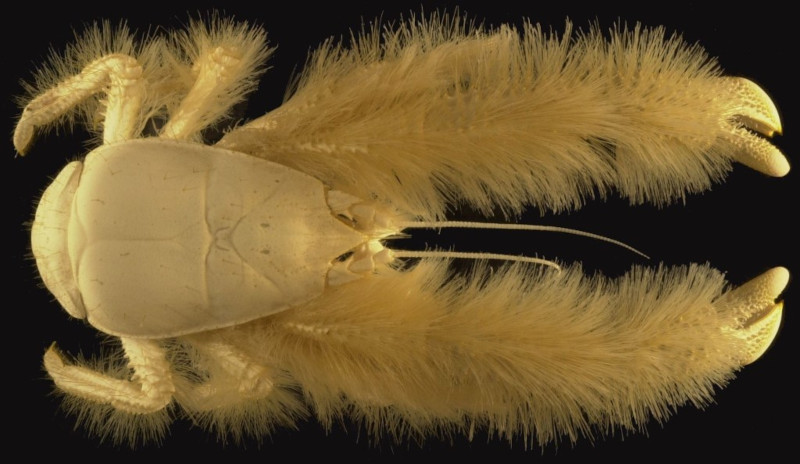Yeti Crab Facts
- Rather understandably, this highly unusual crustacean bears the common name of Yeti Crab. However, its name often serves as a source of confusion for some. That’s because, while bearing the scientific name of Kiwa hirsuta, it also goes by the misleading common name of Yeti Lobster.
- First of all, researchers from the Monterey Bay Aquarium Research Institute first discovered this astonishing animal in 2005. Secondly, the fascinating animal now ranks as one of the most unusual types of crustaceans known to man. But its appearance alone isn’t the only reason for this.
- That holds true due to the fact that it also has highly specific habitat requirements. This additional fact, therefore, makes it of great interest to many researchers. Additionally, the nature of this creature remains so unique that it spurred the creation of an entirely new Family.
- Lastly, but not surprisingly, the IUCN does not yet have a classification for this amazing animal. This occurs due to the lack of sufficient information to make a formal classification at this time. Hopefully, more specimens will be discovered in the near future, providing further data.
Related Articles
Yeti Crab Physical Description
Regardless of its rather remarkable appearance, the Yeti Crab remains somewhat smaller than some related species. That’s because mature individuals typically attain an overall body length of about 6 in (15 cm), with no discernible sexual dimorphism.
Furthermore, the most noticeable feature of the species, however, remains its thick covering of silky hair-like . In fact, these features cover the great majority of its limbs. Researchers theorize the crustacean uses these to remove dangerous minerals from the water.
In addition, its eyes remain quite tiny, at least when compared to related species. These also develop entirely without any pigmentation. Many experts understandably believe the creature to be fully blind. Given the nature of its habitat, this seems a reasonable assumption.
- Kingdom: Animalia
- Phylum: Arthropoda
- Class: Malacostraca
- Order: Decapoda
- Family: Kiwaidae
- Genus: Kiwa
- Species: K. hirsuta
Yeti Crab Distribution, Habitat, and Ecology
Quite unfortunately, the truly astounding Yeti Crab appears to only inhabit a highly specific and rather restricted habitat range. In fact, to date, the only known populations of this impressive animal occur along the Pacific-Antarctic Ridge, south of Easter Island.
In addition, even within this region, it exists only in a highly specific area. That’s because this species only appears at the extreme depth of about 7,200 ft (2,200 m). It therefore spends its life in the darkness of the depths. Further, all known individuals live either on or near hydrothermal vents.
Quite naturally, because of its location, researchers still know very little about many parts of its life cycle. However, experts believe it to feed primarily as a carnivore. But, it remains possible that this fabulous creature may also feed directly on bacteria native to its specific habitat.
Species Sharing Its Range
Check out our other articles on 5 Amazing Galapagos Islands Species , Bee Hummingbird, Blood Falls, Tiger Rattlesnake, Turbinicarpus alonsoi, Indian Bullfrog, Green Dragontail, Maned Wolf

